Unveil the secret to a quick yet authentic Shrimp Pad Thai made right in your Instant Pot. This classic Thai noodle dish, known for its perfect balance of sweet, sour, and savory flavors, is now effortlessly achievable at home.
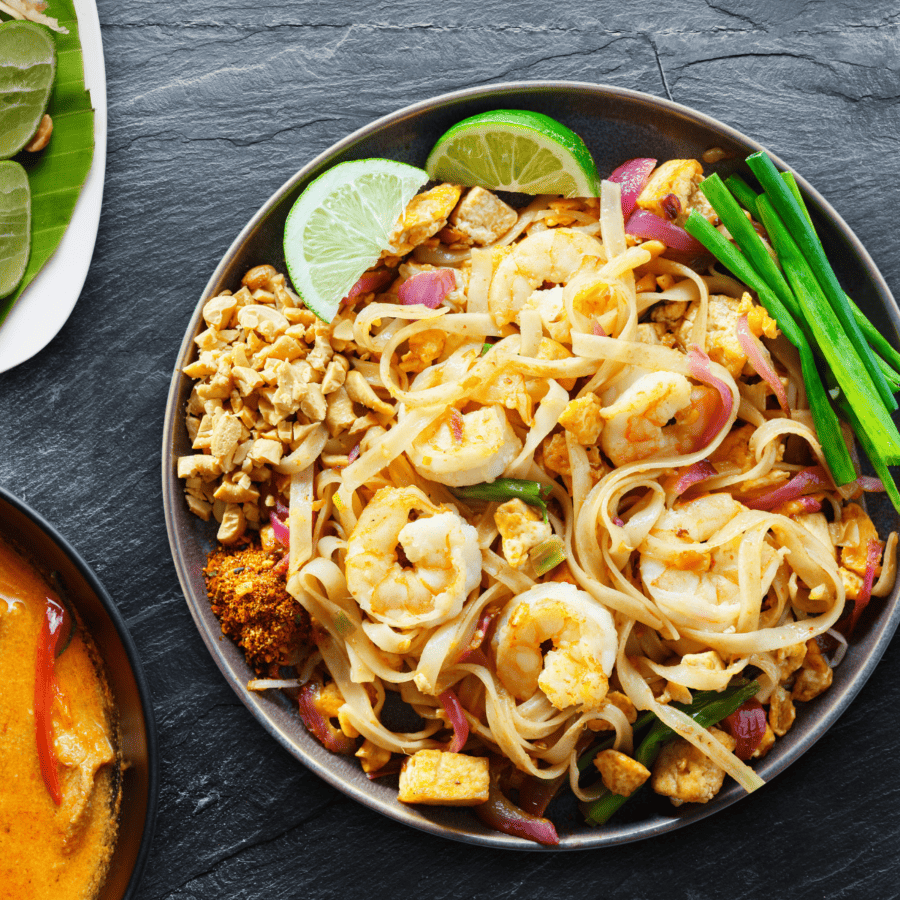
Why You'll Love This Excuse To Cook With Shrimp
- Quick & Simple. Ready in minutes with the help of your Instant Pot.
- Flavor Explosion. A delightful mix of tamarind, fish sauce, and lime, bringing authentic Thai flavors to your kitchen.
- Versatile. Easily adjustable to suit your taste preferences.
- Crowd-Pleaser. A guaranteed hit with family and friends.
Embrace the flavors of Thailand with this easy-to-make, delicious Shrimp Pad Thai.
Why Does Pad Thai Taste So Good?
Pad Thai is renowned for its delicious taste, largely due to its unique combination of flavors and textures that create a harmonious balance on the palate. Here's why Pad Thai tastes so good:
- Complex Flavor Profile. Traditional Pad Thai is a perfect example of the Thai cooking principle of balancing sour, sweet, salty, and savory flavors. The sourness from tamarind, the sweetness from sugar, the saltiness from fish sauce, and the savoriness from ingredients like shrimp or tofu create a complex and satisfying taste experience.
- Textural Variety. Pad Thai offers an appealing mix of textures - the softness of the noodles, the crunch from the peanuts and bean sprouts, the tenderness of the shrimp or other proteins, and the slight chewiness of the egg. This combination ensures that each bite is interesting and enjoyable.
- Fresh Ingredients. The use of fresh and aromatic ingredients like garlic, lime, cilantro, and green onions contributes to the overall freshness of the dish, making it vibrant and appetizing.
- Umami Factor. Ingredients like fish sauce and tamarind not only provide their unique flavors but also contribute to the umami quality of the dish. Umami, often described as a savory or meaty taste, adds depth and richness.
Why Is Pad Thai So Healthy?
Pad Thai can be considered a healthy dish for several reasons, depending on its ingredients and preparation methods:
- Balanced Macronutrients- A well-prepared Pad Thai offers a good balance of macronutrients. It typically includes carbohydrates (from the noodles), protein (from tofu, shrimp, chicken, or eggs), and healthy fats (from peanuts and oils). This combination can provide sustained energy and satiety.
- Vegetable Inclusions- Traditional Pad Thai includes a variety of vegetables like bean sprouts, garlic, shallots, and sometimes carrots, bell peppers, or green onions. These add vitamins, minerals, fiber, and antioxidants to the dish, which are essential for a healthy diet.
- Lean Proteins- Options like tofu, shrimp, or chicken are lean protein sources that are lower in calories and fats compared to red meats, making them a healthier choice for maintaining muscle mass and overall health.
It's important to note that while Pad Thai has these healthy aspects, restaurant versions can sometimes be high in calories, sodium, and sugar due to larger portion sizes and added sweeteners or oils. Making Pad Thai at home allows for better control over these elements, enabling a healthier version of the dish.
What Is Shrimp Pad Thai Made Of?
In the preparation of Instant Pot Shrimp Pad Thai, each ingredient plays a specific role to create a harmonious and authentic Thai flavor experience:
- Rice Noodles- These are the base of the dish. Traditional Pad Thai noodles provide the perfect texture and are excellent at absorbing the flavors of the sauce and other ingredients.
- Fresh Shrimp- Serve as the primary protein in the dish. Shrimp add a delicate, sweet flavor that contrasts nicely with the other savory and tangy components. Using peeled and deveined shrimp ensures they are easy to eat and well-prepared.
- Tamarind Paste- This is key to achieving the authentic sour flavor characteristic of Pad Thai. Tamarind paste adds a tangy depth that is essential to the dish's flavor profile.
- Fish Sauce- Provides umami depth, adding a rich, savory element to the dish. Fish sauce is a staple in Thai cooking and contributes to the unique taste of Pad Thai.
- Brown Sugar- Used to balance the sourness of the tamarind and the saltiness of the fish sauce. It adds a subtle sweetness, creating a well-rounded flavor profile.
- Eggs- Lightly beaten eggs are usually scrambled in the dish, adding texture and richness. They also help to bind the ingredients together.
- Bean Sprouts- Add a fresh and crunchy texture to Pad Thai. They bring a lightness and are often added towards the end of cooking to maintain their crispness.
- Garlic- Minced garlic is used for its aroma and flavor. It's a foundational ingredient that is sautéed initially to infuse the oil and other components with its fragrant quality.
- Peanuts- Crushed peanuts are typically used as a garnish. They add a nutty flavor and a crunchy texture, enhancing the overall sensory experience of the dish.
- Green Onions and Cilantro- They add a burst of color, freshness, and an herby aroma that complements the other flavors in the dish.
- Lime Wedges- The lime juice adds a bright, acidic element that can enhance and elevate the flavors of the Pad Thai.
How Long Does Shrimp Pad Thai Last?
- Prepare Noodles. Soak rice noodles in warm water until they're soft.
- Sauté Shrimp. Using the sauté function, cook the shrimp until they turn pink, then set aside.
- Cook the Aromatic. Sauté garlic, then add tamarind paste, fish sauce, and brown sugar, stirring until well combined.
- Combine Ingredients. Add the softened noodles and cooked shrimp to the pot. Pour in a small amount of water and let everything simmer.
- Finish with Eggs and Garnishes. Push the noodles to one side, pour in the beaten eggs, and scramble. Toss everything together and finish with bean sprouts, peanuts, green onions, and cilantro.
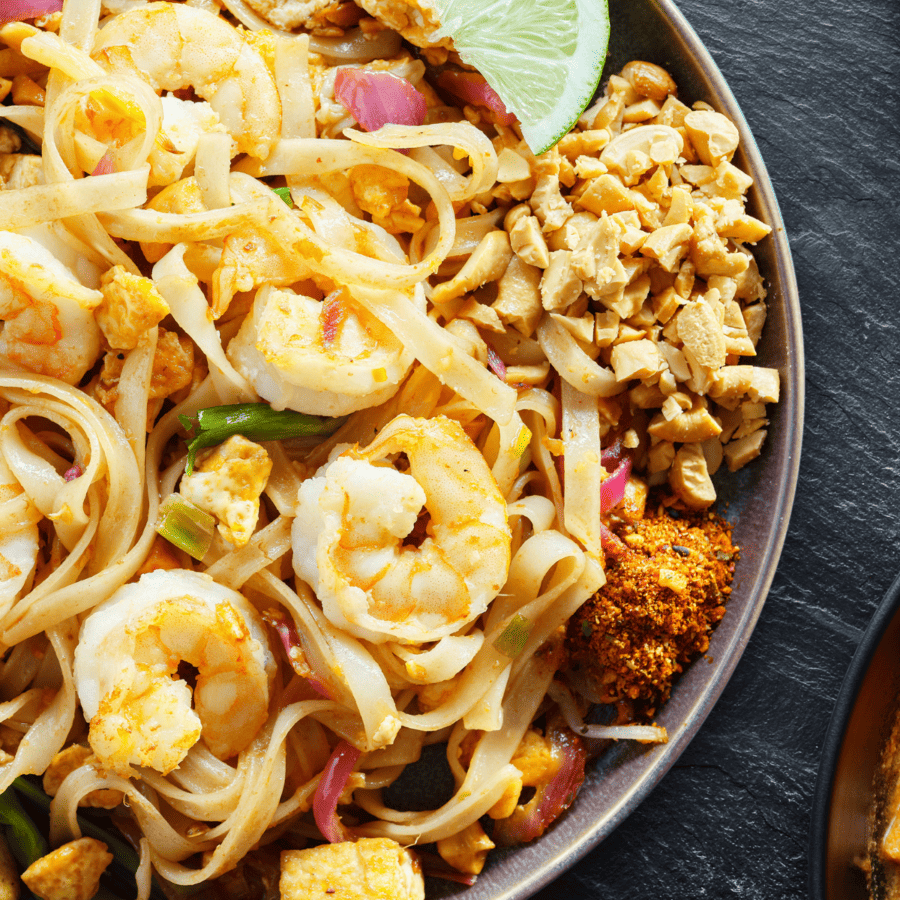
Tips And Tricks
Making Shrimp Pad Thai in an Instant Pot can be a convenient and quick way to enjoy this classic Thai dish. Here are some tips and tricks to help you get the best results:
- Prepare the Pad Thai sauce in advance. A traditional sauce usually includes tamarind paste, fish sauce, sugar, and lime juice. Adjust the ingredients to suit your taste – more sugar for sweetness, lime juice for tanginess, or fish sauce for saltiness.
- Sauté the shrimp first in the Instant Pot until they are just pink and remove them. This prevents them from overcooking when you add them back later.
- After sautéing aromatics, add the soaked and drained noodles and pour the prepared sauce over them. Do not stir too much to avoid breaking the noodles.
Variations
Shrimp Pad Thai is a versatile dish that can be adapted in various ways to suit different tastes and dietary requirements. Here are some variations you might consider:
- Vegetarian Pad Thai- Replace shrimp with tofu or an assortment of vegetables like bell peppers, carrots, and broccoli. Use soy sauce instead of fish sauce for a truly vegetarian version.
- Chicken or Beef Pad Thai- Substitute shrimp with thinly sliced chicken or beef. Cook the meat thoroughly before adding it to the noodle mixture.
- Spicy Pad Thai- Increase the heat by adding more red chili flakes, fresh Thai chilies, or a spoonful of Sriracha sauce to the Pad Thai sauce.
What To Serve With Shrimp Pad Thai
Serving Shrimp Pad Thai can be a delightful culinary experience, especially when you pair it with complementary sides and beverages. Here are some suggestions:
- Fresh Spring Rolls- Light and refreshing, these rolls filled with vegetables, herbs, and sometimes shrimp or chicken, can be a perfect start.
- Thai Chicken Satay- Skewers of grilled chicken served with a peanut sauce. The savory flavors pair well with the Pad Thai.
- Jasmine Rice- A staple in Thai cuisine, it’s a simple addition that can absorb the Pad Thai's flavors.
- Stir-fried Vegetables- A mix of vegetables stir-fried with a bit of soy sauce or oyster sauce can add a healthy balance.
How Long Does It Last?
In the refrigerator, Shrimp Pad Thai can last for about 3 to 4 days. Make sure to store it in an airtight container to maintain its quality and prevent it from absorbing other flavors from the fridge.
Can You Freeze It?
You can freeze Shrimp Pad Thai for longer storage. In the freezer, it can last for up to 2 months. However, the texture of the noodles and shrimp might change after freezing and thawing. To freeze, place it in a freezer-safe container or bag.
More Thai Recipes
- Thai Curry Soup
- Air Fryer Thai Peanut Chicken
- Thai Green Curry Mussels
- Thai Cashew Chicken
- Spicy Thai Basil Beef
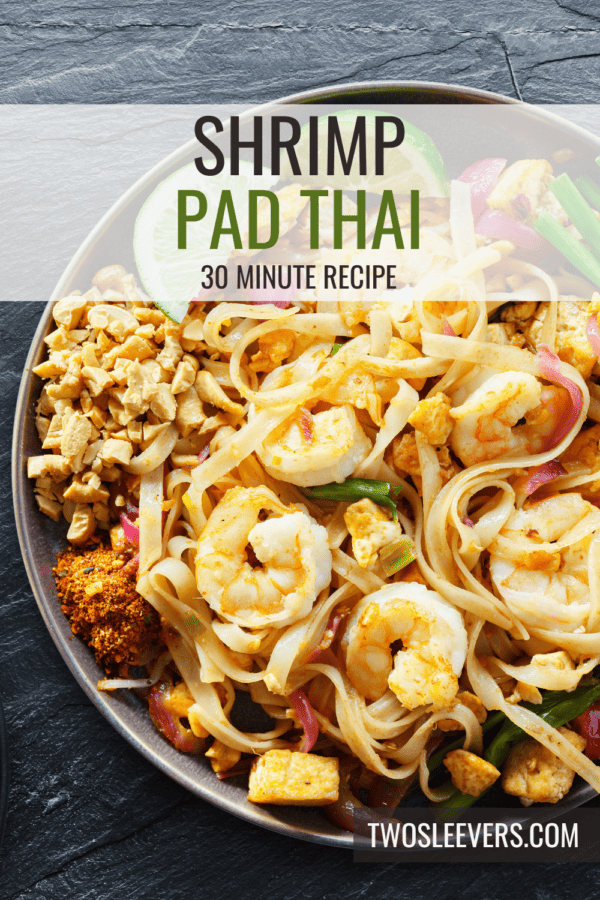
Pin It!
If you love this Shrimp Pad Thai recipe as much as we do, make sure you share it with your friends on Facebook and Instagram so they can try it too! Don't forget to Pin it so you can make it again soon.
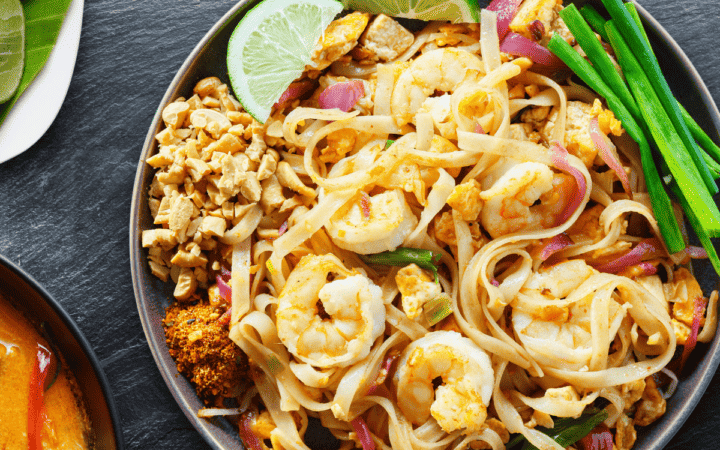
Ingredients
- 8 oz Pad Thai Noodles
- 1 pound Shrimp, Peeled and deveined
- 3 tbsp Tamarind Paste
- 4 tbsp Fish Sauce
- 3 tbsp Brown Sugar
- 2 Eggs
- 1 cup Bean Sprouts
- 3 cloves Garlic, minced
- 1/2 cup Peanuts, crushed
- 4 Green Onions, sliced
- Cilantro, for garnish
- Lime Wedges, for garnish
- 1/4 cup Water
Instructions
- Prepare Noodles. Soak rice noodles in warm water until they're soft.
- Sauté Shrimp. Using the sauté function, cook the shrimp until they turn pink, then set aside.
- Cook the Aromatic. Sauté garlic, then add tamarind paste, fish sauce, and brown sugar, stirring until well combined.
- Combine Ingredients. Add the softened noodles and cooked shrimp to the pot. Pour in a small amount of water and let everything simmer.
- Finish with Eggs and Garnishes. Push the noodles to one side, pour in the beaten eggs, and scramble. Toss everything together and finish with bean sprouts, peanuts, green onions, and cilantro.
Get support & connect with our community on Facebook!
Nutrition
Don't forget to check out my other Best-selling Instant Pot Cookbooks!
Indian Instant Pot, Keto Instant Pot, Instant Pot Fast and Easy, Healthy Instant Pot & Vegetarian Instant Pot.
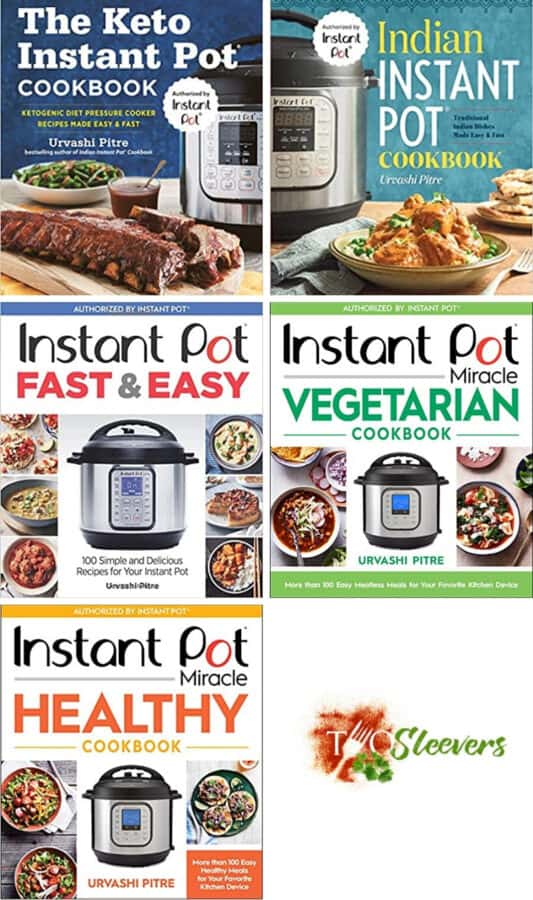

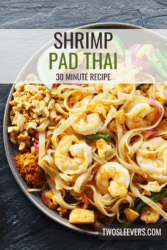
Leave a Reply